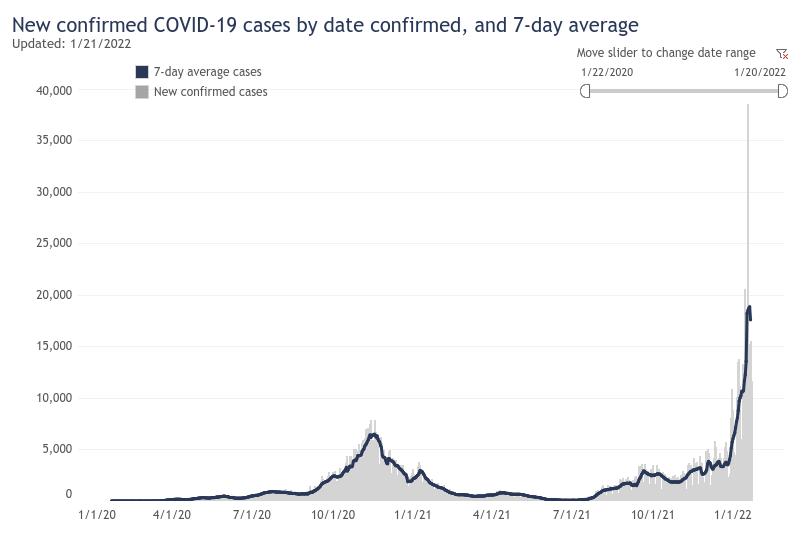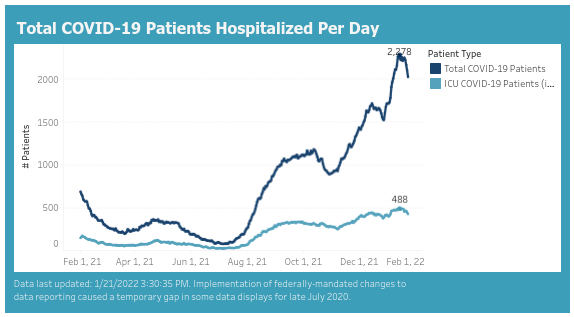COVID-19 Downtrend 'Not Indicative' Of Omicron's Peak In WI: DHS
WISCONSIN — Wisconsin is seeing a slight decrease in COVID-19 cases and hospitalizations and even detecting lower levels in wastewater in some cities and towns, but state health experts said we haven't seen the peak of the omicron variant yet.
COVID-19 trends finally began to drop in Wisconsin on Thursday, but Dr. Ryan Westergaard, the chief medical officer for the Wisconsin Department of Health Services, said the data is "not indicative" of omicron's peak.
"There are some jurisdictions that seem to have a decline in the past week, so I think we can be hopeful that we're near the peak if not there already," Westergaard said in a news conference. "We haven't seen that with our data."
It's not clear if the decline — once it comes — will be quick or prolonged, he added.
The seven-day average for new COVID-19 cases in Wisconsin fell to 17,586 new cases per day on Thursday, state health services data showed. This was the first decline in the omicron surge. The seven-day average was 18,867 cases the Wednesday before.

Wisconsin hospitals also reported a slight decrease: 2,021 COVID-19 patients were hospitalized statewide on Friday, Wisconsin Hospital Association data showed. Hospitalizations peaked at 2,278 on Jan. 12.

The Milwaukee Metropolitan Sewerage District - South Shore detected fewer SARS-CoV-2 gene copies per person than they found Jan. 9, but the change from the start of January until now wasn't significant, the sewerage district said.
Even with the slight decrease, COVID-19 cases are still higher than they've ever been, Westergaard said.
Health care workers are still pressed by the high numbers of COVID-19 patients, to the point where some Wisconsin urgent care centers have closed indefinitely, and some patients have been turned away from care.
State health services implemented an automatic loading system for positive COVID-19 test results on Jan. 14, which may have resulted in higher-than-usual COVID-19 data numbers a few days after.
While experts agree that vaccination is the No. 1 tool to fight the spread of COVID-19, Westergaard said that cases can decline quicker with prevention strategies like masking.
Masking policies were shut down at the state level by the Wisconsin State Supreme Court, but local municipalities have enacted their own rules; Racine and Dane County have their own, and Milwaukee Acting Mayor Cavalier Johnson signed a masking ordinance for Milwaukee on Thursday.
See Also: Mask Ordinance Passes Milwaukee Common Council
Parts of the U.S. could see the surge in COVID-19 cases brought by the omicron variant finally peak in late January or early February, City of Milwaukee's chief health adviser Dr. Ben Weston said.
Health experts insist that getting vaccinated against COVID-19 is the best tool to fight the spread of the disease and its most severe effects.
RELATED: COVID-19: When Omicron Will Peak In WI, According To Experts
This article originally appeared on the Milwaukee Patch

